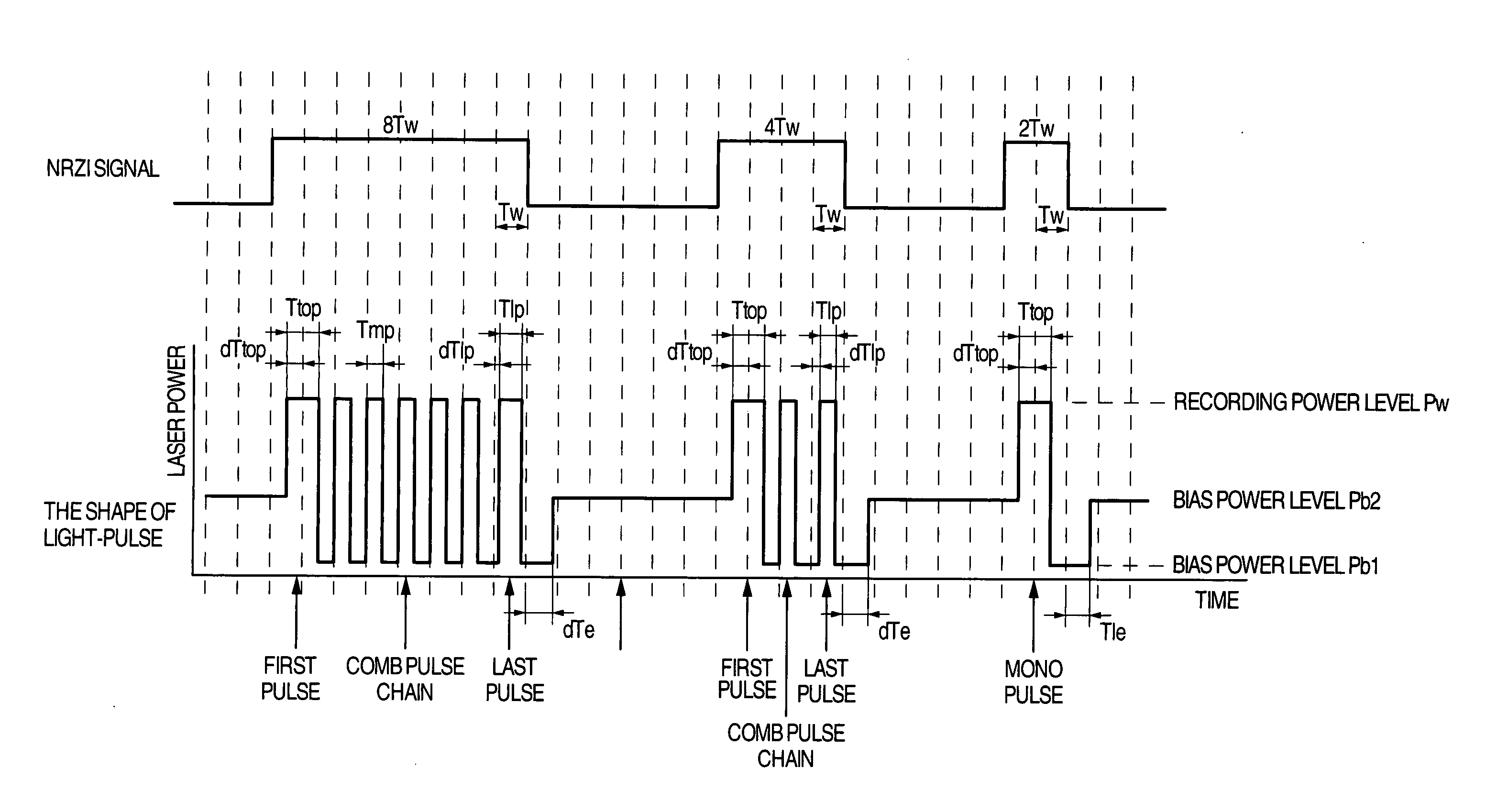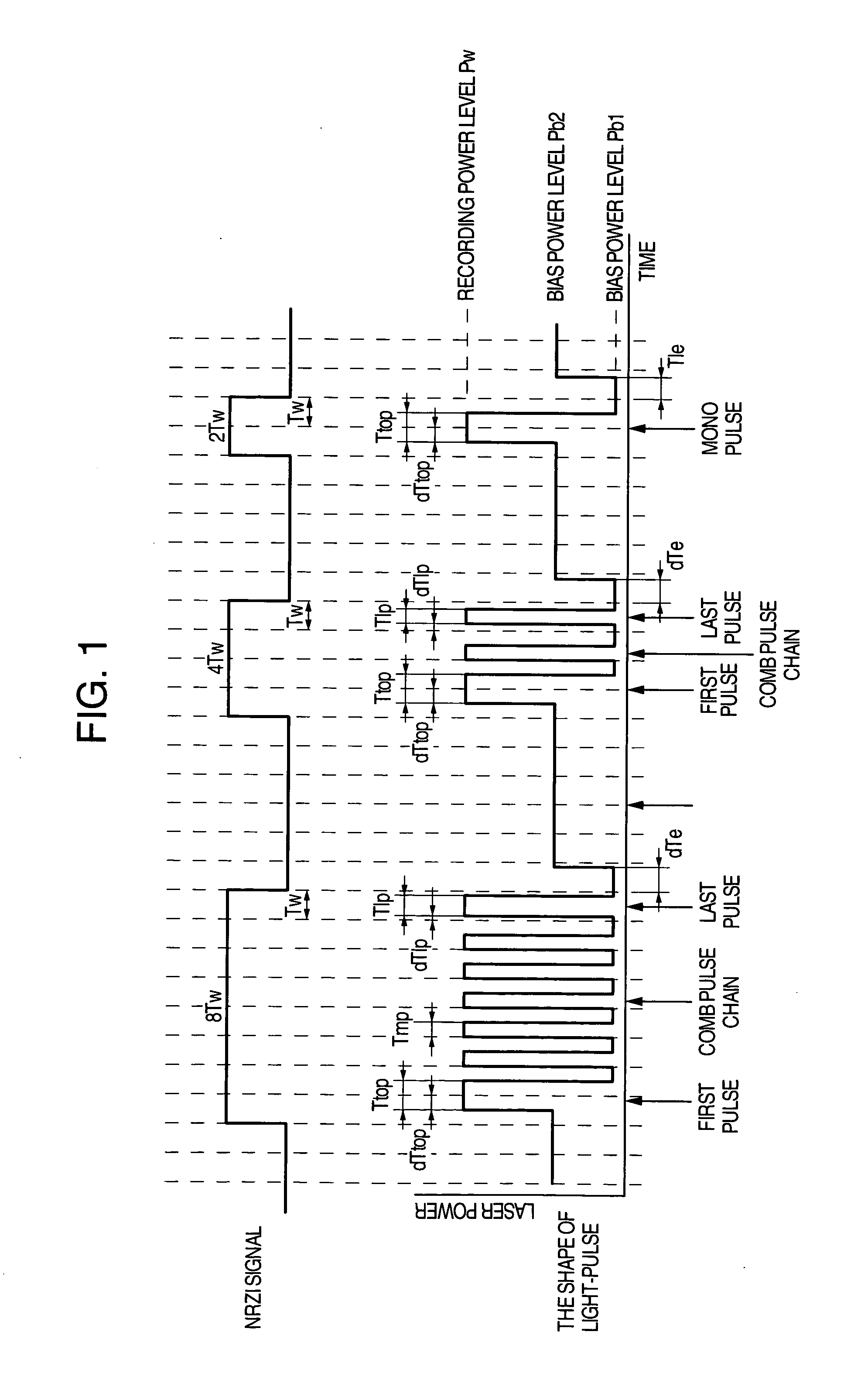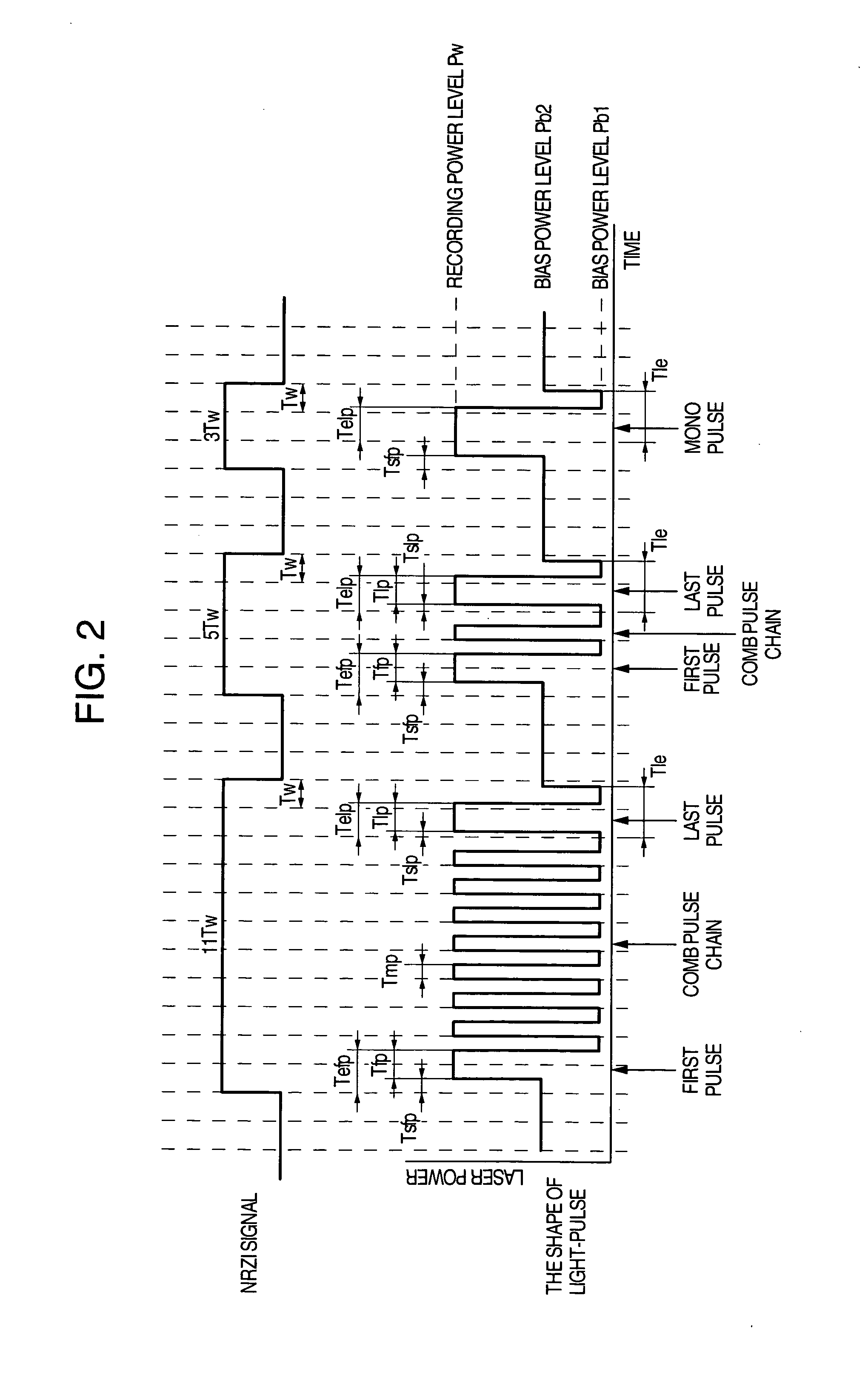Optical disk recording method, optical disk device and optical disk
a recording method and optical disk technology, applied in the field of optical disks, can solve the problems of high possibility of geometrical mark distortion and mark edge shift, and high possibility of mark edge shift in the waveform of a playback signal, and achieve the effect of convenient operation of optical disk recording method and optical disk devi
- Summary
- Abstract
- Description
- Claims
- Application Information
AI Technical Summary
Benefits of technology
Problems solved by technology
Method used
Image
Examples
second embodiments
First and second embodiments of the invention will be described below with reference to the drawings.
FIG. 4 shows an optical disk device according to the invention. In FIG. 4, the reference numeral 100 designates an optical disk; 110, a spindle motor; 112, a chucking mechanism; 115, a guide rail; 116, a feed motor; 117, an optical pickup; 121, an objective lens actuator; 131, a semiconductor laser; 132, a collimator lens; 133, a beam splitter; 134, a detection lens; 135, a photo detector; 136, an objective lens; 150, a system controller; 151, a servo controller; 152, an amplifier; 153, a decoder; 154, a signal processing circuit; 155, a delay circuit; 156, current sinks; 157, a constant current source; 158, an output terminal; 159, an input terminal; 160, a power supply terminal; 161, a signal processing circuit; and 170, a binarization circuit.
first embodiment
An optical disk recording method according to the invention will be described.
FIG. 1 shows a recording strategy in the optical disk recording method according to the invention. In this embodiment, there is shown the case where information is recorded after converted into RLL(1, 7) as a modulation code. When Tw is the time width (detection window width) of a reference clock pulse for recording and reproducing data, the smallest mark or space length is 2Tw (twice as large as the time Tw) and the largest mark or space length is generally 8Tw.
When an NRZI signal expressing time-series information to be recorded in the optical disk is given, the NRZI signal is converted into a time-series energy beam power level change, that is, an emission pulse waveform by a suitable signal processing circuit.
Three power levels, namely, a recording power level Pw, a first bias power level Pb1 and a second bias power level Pb2, are set on the assumption that a rewritable phase change material having...
second embodiment
The optical disk recording method as the invention will be described below.
In this embodiment, the time point (position) and irradiation time period (width) of a recording pulse of 2Tw are defined independent of the pulse chain of 3Tw or larger. That is, let dTop2 be the pulse rise position of the recording pulse and let Ttop2 be the irradiation time period of the recording pulse. With respect to dTtop2 and Ttop2, a reference table as shown in FIG. 8 is defined independently in accordance with the combination of the preceding space length and the following space length. Incidentally, a reference table of dTop and Ttop is defined on the basis of the recording mark length of 3Tw or larger.
When the recording pulse of 2Tw is defined by the combination of the preceding space length and the following sapce length as described above, dependence of rear edge shift of a 2Tw mark on the following space length can be compensated though the dependence cannot be compensated in the first embod...
PUM
 Login to View More
Login to View More Abstract
Description
Claims
Application Information
 Login to View More
Login to View More - R&D
- Intellectual Property
- Life Sciences
- Materials
- Tech Scout
- Unparalleled Data Quality
- Higher Quality Content
- 60% Fewer Hallucinations
Browse by: Latest US Patents, China's latest patents, Technical Efficacy Thesaurus, Application Domain, Technology Topic, Popular Technical Reports.
© 2025 PatSnap. All rights reserved.Legal|Privacy policy|Modern Slavery Act Transparency Statement|Sitemap|About US| Contact US: help@patsnap.com



